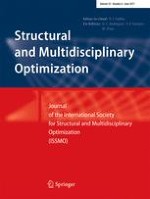10.12.2016 | RESEARCH PAPER
Topology optimization of structures with anisotropic plastic materials using enhanced assumed strain elements
Erschienen in: Structural and Multidisciplinary Optimization | Ausgabe 6/2017
EinloggenAktivieren Sie unsere intelligente Suche, um passende Fachinhalte oder Patente zu finden.
Wählen Sie Textabschnitte aus um mit Künstlicher Intelligenz passenden Patente zu finden. powered by
Markieren Sie Textabschnitte, um KI-gestützt weitere passende Inhalte zu finden. powered by
